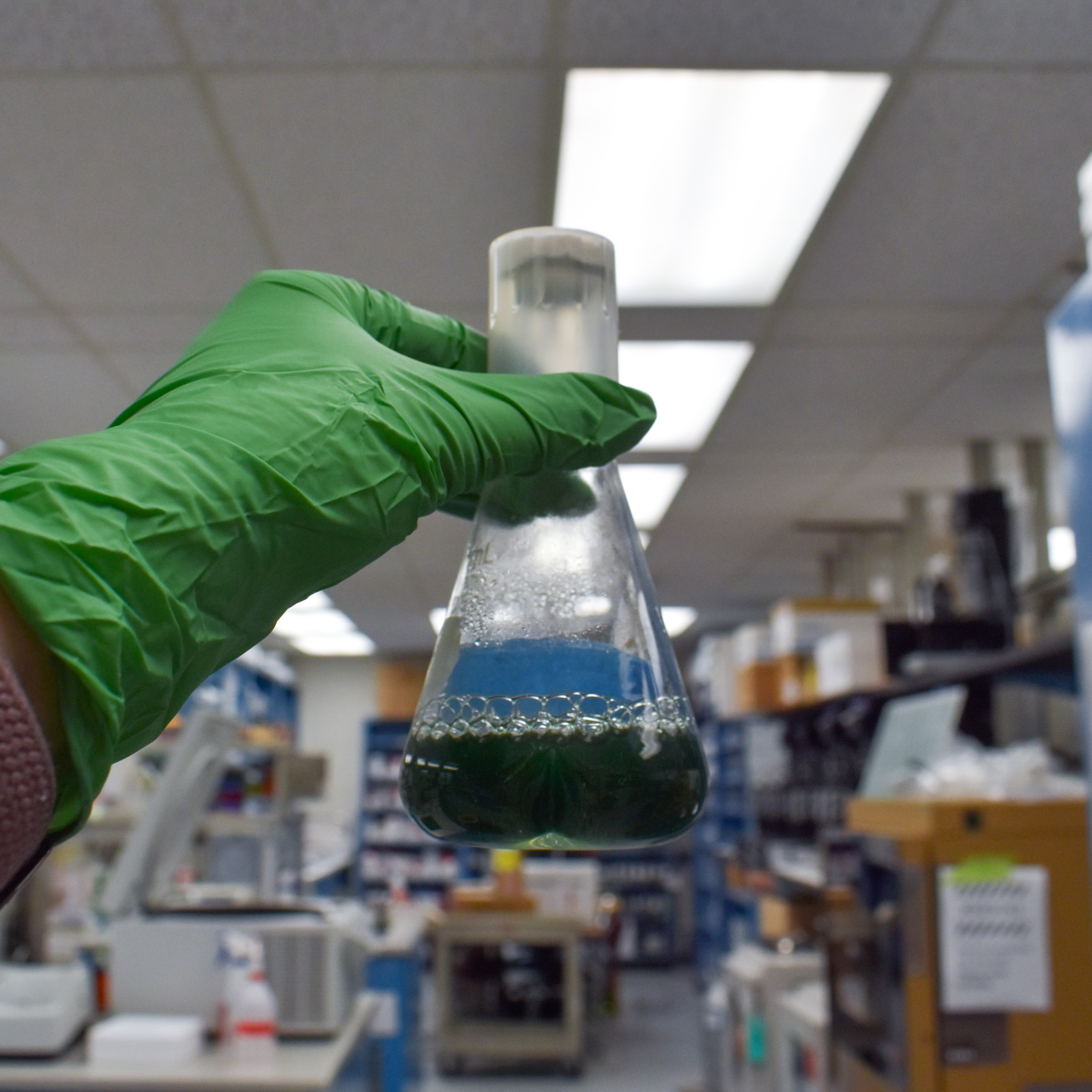Intramolecular 13C/12C signals inform about carbon allocation in plant leaves
Whole-molecule carbon isotope ratios (13C/12C) enable assessments of plant carbon uptake yet conceal information about carbon allocation. Here, we identify an intramolecular 13C/12C signal at tree-ring glucose C-5 and C-6 and develop experimentally testable theories on its origin.

By Tom Sharkey
Scientific Achievement
Carbon dioxide in the air is 99% carbon-12 and 1% carbon-13. Plants use carbon-13 about 3% more slowly than carbon-12. Measuring the ratio of carbon-13 to carbon-12 in all atoms of a sugar molecule can give information on past climate. Here, we measured the ratio in just carbon atoms 5 and 6 of the six-carbon sugar, glucose. This ratio was compared to other climate variables and found to correlate with past ozone concentrations. We developed hypotheses about how sugar metabolism can explain the correlations seen in the data.
Significance and Impact
Up to now, carbon isotope ratios have been measured for whole molecules, but the data presented here shows that additional information is present in the ratio of specific carbon atoms. Here, we used the ratios in carbon atoms 5 and 6 to generate hypotheses about carbon metabolism in intact leaves. These can now be tested to improve our understanding of photosynthesis.
Research Details
- Wood samples from tree rings covering the period of 1961 to 1995 were digested (converted to glucose) and free glucose was used to determine carbon-13 to carbon-12 ratios.
- Nuclear magnetic resonance was used to measure the ratio for each carbon atom in glucose.
- The variation in the ratio was correlated with past climate variables.
- All carbon atoms showed a correlation with humidity as expected.
- Carbon atoms 5 and 6 showed an additional correlation. Ozone levels over the years were correlated with the ratio on carbons 5 and 6 but not to other carbons in the glucose molecule.
- Metabolic pathways were examined to create a hypothesis to explain how a new signal can be created in just two of the six carbon atoms of glucose.
Related people: Thomas Wieloch, Thomas David Sharkey, Roland Anton Werner, Jürgen Schleucher
DOI: 10.1093/jxb/erac028
Research highlight by: Thomas D. Sharkey
Edited by: Kara Headley
This work was funded in part by the US Department of Energy, Office of Basic Energy Sciences.



